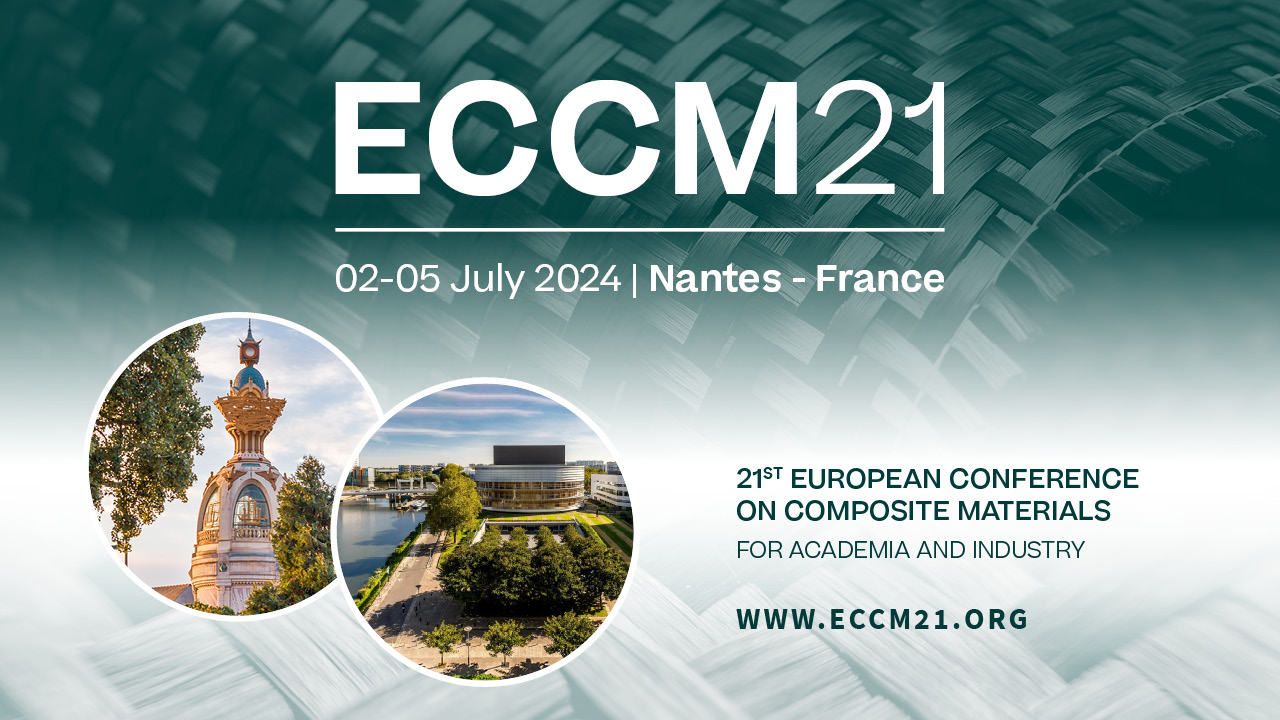An Automated Tape Laying (ATL) System Employing a Uniaxial Force Control Device
Topic(s) : Manufacturing
Co-authors :
Bernhard RAMEDER (AUSTRIA), Hubert GATTRINGER , Ronald NADERER , Andreas MÜLLERAbstract :
The use of UD tapes (unidirectional fiber reinforced tapes) enables the creation of lightweight components that consider load paths and guarantee an efficient use of the raw material. Certain reinforcing fibers, like carbon or glass, are embedded in a thermoplastic substrate, called matrix. When applying the individual tape stripes, it is important to precisely ensure the melting temperatures and contact pressures for the respective thermoplastic material at all working points in order to obtain a good result. Therefore, regulating the temperature at the contact point and the contact force itself are of central importance. The available heating systems are often relatively complex and therefore expensive, and cost-intensive force sensors are often necessary for force control. Due to these circumstances, this approach deals with a concept and a test setup of an automated tape laying (ATL) system that uses cost-effective alternatives to conventional components normally used in the taping process, and therefore reduces the overall costs. The quality of the product not only depends on a well-designed ATL system, but also on an appropriate path planning strategy. Unlike many other systems, in this approach, the taper is spatially mounted and the shape, which holds the already tacked substrate, is pulled over it using an industrial robot. While taping, the tape gets unspooled due to the robots handling motions. A special robot control concept along with novel path planning strategies is introduced. This allows for handling of rather compact and complex shapes in contrast to most other tape laying systems.
The design and functionality of the automated tape laying system is explained in detail. This includes the description of the tape storage spool, the part which holds the raw material, the tape processing unit, which is responsible for tape feeding, the guidance of the tape to the consolidation point and the tape cutting. Subsequently to these modules follows the heating zone and the force controlled consolidation unit. Here a special uniaxial force controlled flange is used. As test setup, a combination of the described ATL system and a robot with fully self-developed control is presented. Furthermore, the in-house developed robot control facilitates the design of novel control strategies, which enables improvements in the whole taping process. Therefore, some future investigations will be the consideration of the behavior of temperature and contact force related to the used thermoplastic matrix, which carries the carbon fibers of the UD tapes. Additionally, the heating power of the infrared emitters can be taken into account for calculating optimal trajectories for the taping process. In addition, the complexity of the molds shape can be increased and new ways to handle the trajectory planning can be searched for this case.
The design and functionality of the automated tape laying system is explained in detail. This includes the description of the tape storage spool, the part which holds the raw material, the tape processing unit, which is responsible for tape feeding, the guidance of the tape to the consolidation point and the tape cutting. Subsequently to these modules follows the heating zone and the force controlled consolidation unit. Here a special uniaxial force controlled flange is used. As test setup, a combination of the described ATL system and a robot with fully self-developed control is presented. Furthermore, the in-house developed robot control facilitates the design of novel control strategies, which enables improvements in the whole taping process. Therefore, some future investigations will be the consideration of the behavior of temperature and contact force related to the used thermoplastic matrix, which carries the carbon fibers of the UD tapes. Additionally, the heating power of the infrared emitters can be taken into account for calculating optimal trajectories for the taping process. In addition, the complexity of the molds shape can be increased and new ways to handle the trajectory planning can be searched for this case.

